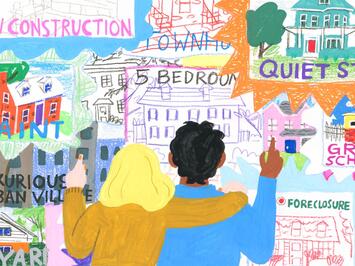
Let’s talk about the nation’s housing affordability crisis.
I recently downloaded some 2023 third quarter data from the National Association of Realtors. Nationally, NAR reported that the median sales price for existing family homes from July-September 2023 was $406,900, up 2.2% over the previous year. But when you look at the data sorted by metropolitan area, the magnitude – and yet, specificity – of the housing affordability crisis becomes clear. Six west coast metros – San Jose, Anaheim, San Francisco/Oakland, Honolulu, San Diego and Los Angeles – rank among the top eight in median sales price. San Jose leads the way with a staggering $1.85 million median sales price, followed closely by Anaheim ($1.31 million) and the Bay Area ($1.30 million). Honolulu, San Diego and Los Angeles are part of a select group of metros with median sales prices above $900,000.
But it doesn’t stop there. NAR tracks median sales price data for 221 metro areas, of which 53 have a population of 1 million or more people. Large metros like these, particularly on the east and west coasts, make up 18 of the 29 highest median sales prices. From New York to Seattle, from Boston to Miami, home sale prices (and rents) continue to skyrocket, with no end in sight.
So yes, the affordability crisis is a national phenomenon that started out on the coasts and has moved inland. However, if you’ve been following me for any time, knowing that I write about cities and urbanism, you’re probably aware I’ve rarely written about the housing crisis at all.
Why? I’ve spent my entire life living in the Midwest, the nation’s most affordable region. At $304,900, the Midwest trails well behind the median sales prices of the West ($623,100), the Northeast ($467,700), and the South ($369,300). I’ve lived in the Chicago metro area for more than 30 years. Chicago’s the third largest metro in the U.S. after New York and Los Angeles, which also rank eighth and 20th respectively by median sales price. Meanwhile, Chicago has the 89th highest median sales price ($365,100). Chicago is perhaps the most housing-affordable big metro area in the nation.
I live in upper-middle class suburbia, where housing costs are higher than I’d like, but not obscene. In Chicago, there are areas with super-high prices and rents, but there are still very affordable, very good neighborhoods available. I’d wager that Chicagoland’s negligible growth rate has as much to do with our costs as anything. The same can be said for all of the Midwest.
I’d also add that I don’t own, I rent, and I’ve been in the same place for 14 years. Bottom line, my housing situation is fine; it could be better, but I don’t feel necessarily constrained because of high housing costs. I make a good salary as a department head of a suburban municipality, and my wife makes a good salary as a health care professional. I honestly feel I could live nearly anywhere I would want to in this market. That’s the great advantage of living in the Midwest.
And that’s just it – living where I do and seeing that housing costs might reflect decisions made by individuals more than broader economic forces, gives me a different perspective on housing affordability. But it might have a lot to do with my unique perspective on today’s housing crisis. It simply hasn’t touched me personally.
I know that the affordability crisis hits many people in many other markets very differently. I understand the pain felt by people who see their housing dream slipping away. I recognize the impact of the affordability crisis on cities. More cities are becoming victims of their own success, where only the wealthiest residents can afford to live in them.
That’s why I endeavor to understand how this happened and how it can be fixed.
Read the rest of this piece at Corner Side Yard Blog.
Pete Saunders is a writer and researcher whose work focuses on urbanism and public policy. Pete has been the editor/publisher of the Corner Side Yard, an urbanist blog, since 2012. Pete is also an urban affairs contributor to Forbes Magazine's online platform. Pete's writings have been published widely in traditional and internet media outlets, including the feature article in the December 2018 issue of Planning Magazine. Pete has more than twenty years' experience in planning, economic development, and community development, with stops in the public, private and non-profit sectors. He lives in Chicago.
Photo: Janna Morton, from curbed.com












